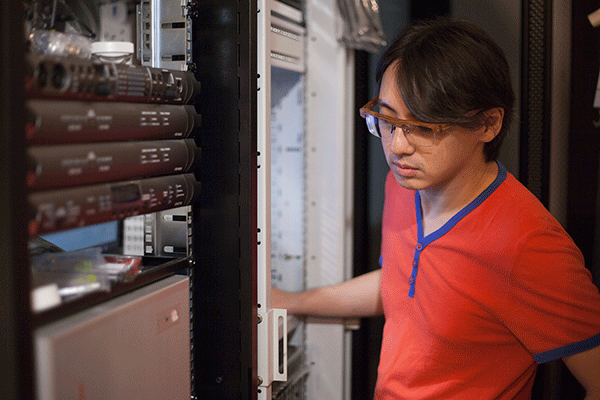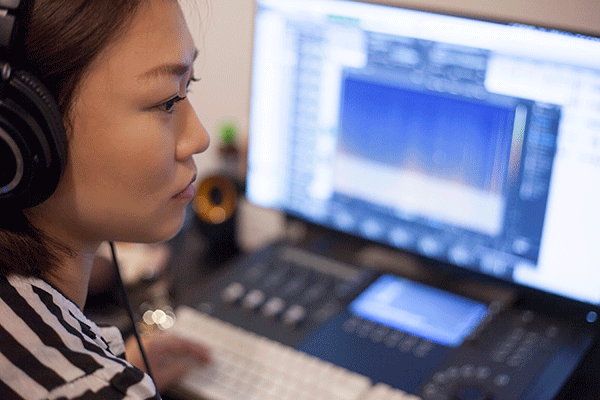
8 Common Mistakes a Film Producer Makes
Posted by admin_mocha | Feature posts, Uncategorized | No Comments
No film that’s worth two hoots was made without a good producer. They steer the film from beginning to completion and beyond – from bringing together the entire creative team and hustling for a peachy budget in pre-production to making sure everything that’s earmarked “we’ll fix it in post” actually gets fixed in post.
Take away the producer from the equation, and you’ll probably end up with a budget that no one who can do basic math would approve, a madhouse for a set, locations with no permits, a crew with two left feet and a director in dire need of therapy. Oh, and good luck finding a post-production house that specializes in miracles.
Suffice to say, we have the utmost respect for producers. Working with a producer who gets it can make all the difference in post-production – be it in time, labour or money spent.
But even the best fall down sometimes. Here are 8 common mistakes a producer makes – and how to fix them… and we don’t mean in post.
1. Not organizing a pre-production meeting
Sure, you’ve assembled your dream team. The script’s a winner. Your director had his third coffee. Everyone’s in their place and ready to go. Who needs a pre-production meeting when the stars are aligned in your favour? Well, you do.
Most common issues faced in post can actually be resolved before production begins simply by setting up a meeting with all the key personnel. We’re talking DOP, Location Sound Recordist, Data Wrangler, Editor, Sound Designer, Composer, Production Designer, Art Director, Costume Designer and Colourist at the very least. Issues like framerate, workflow and schedule can easily be mapped out before it gets too late.
What’s more, with all these great minds in one room (and perhaps a bottle of whisky to get those creative juices flowing) you can turn a boring briefing into a brainstorm session for ideas to enhance the film.
2. Not hiring a Post-Production Supervisor
There are about a million and one things that could go wrong in a production, and even the best producer may not have the technical know-how to solve every one of them.
Having a Post-Production Supervisor on your team would take the technical problems out of your hands, leaving you with more headspace to deal with everything else.
Need to shoot in 4K but don’t know how to handle the huge file sizes? No problem. Conversion from film to TV without the ugly strobing? Piece of cake. Need to ensure sync across double system recording? With a little bit of planning (see point 1), you’d be guaranteed a smooth ride ahead.
3. Not hiring a boom operator
A boom operator is an indispensable asset to every shoot. Sadly, as our cameras get smaller, so does the size of the crew, and the boom operator often gets left out of the hiring mix.
Having a boom operator on set can make or break a recording. Not only does the boom mic offer the most natural sound, having a 2-person team can also help the Location Sound Mixer bring out the best of the audio source – from being able to focus on his/her mix to resolving any noisy problems on set such as adjusting bad mic placement, padding clunky heels, and the list goes on.
Besides, if anything goes wrong with the wireless mics, there’ll always be the backup boom track to fall back on, saving you plenty of money and cringe-worthy moments from bad ADR (Automated Dialogue Replacement).
Hey, if you want that ‘Hollywood sound’, you’ve got to start investing in it.
4. Under-budgeting for post-production
There’s an old saying that goes something like “Fast, good or cheap. Pick two.” Well, we couldn’t have said it better ourselves.
Taking your raw footages and developing them in post-production isn’t as simple as slapping on an Instagram filter. It takes time to explore the full potential of the rushes – from finding the exact expression that the character needs to shaping every scene sonically. What’s more, every time you play the “we’ll fix it in post” card, bear in mind that while we certainly can, it’s going to cost you.
Still not convinced? What if we told you there’s a correlation between the Best Film and Best Editing, both nominees and winners, at the Academy Awards? With enough time and for the right price, you may be one step closer to that golden statuette.
5. Changing the edit after locking picture
Do any of these file names look familiar to you? Locked Cut, Locked Cut 2, Final Locked Cut, FINAL FINAL LOCKED PLEASE NO MORE CHANGES CUT.
While it’s crucial to get the right edit, changing it after the next process has started — be it Sound Post, VFX or Colour Grading — unleashes the dominos from hell, resulting in a chain of technical nightmares waiting to happen. Not only will picture and sound most likely go out of sync, you’ll end up with different people working on different cuts – all of which will take a whole lot of time and money to resolve.
If you’re out of options and really have to change the cut, then hopefully you’d have hired a Post-Production Supervisor (see point 4) to plan the best recut workflow.
6. Starting the subtitling process too late
It’s no secret that subtitling is the most underrated function on screen, but wrongly translated or badly timed subtitles can easily ruin the entire film viewing experience.
Starting the subtitling process in the offline edit can ensure any mistakes to be spotted throughout the approval process, allowing less margin for error. Given that we work in a multi-racial industry, it also allows all key personnel to understand the story rather than work through the film blind.
7. Not asking enough questions
Working in a technology driven industry is never easy. After CD and PG, the abbreviations can get pretty intimidating – think AIFF, DCI, DCP, MPEG, OMF and the list goes on. No one expects everyone to know them all — although a Post-Production Supervisor would (see point 2) — so don’t be afraid to ask questions.
Any craftsman would be thrilled to have someone else taking an interest in his/her craft, and would be more than happy to share a tip or two with you. Besides, it never hurts to know more about everyone’s roles when you’ve got an entire production to manage.
8. Sacrificing the creative process
Amidst all the logistical, financial and technical processes a producer has to manage, it is easy to lose sight of the end game – enhancing and preserving the creative process. Unfortunately, it isn’t uncommon for a producer to make creative sacrifices to a film for the sake of achieving targets; whether it is adopting cheaper solutions or taking shortcuts to make sure deadlines are met.
When faced with numerous constraints that can end up jeopardizing the creative process, a good producer needs to take a step back and remind themselves that at the end of the day, we are making a movie, and it is after all still a creative endeavour.
Got something to add? A bone to pick? Ping us on Facebook!





Recent Comments